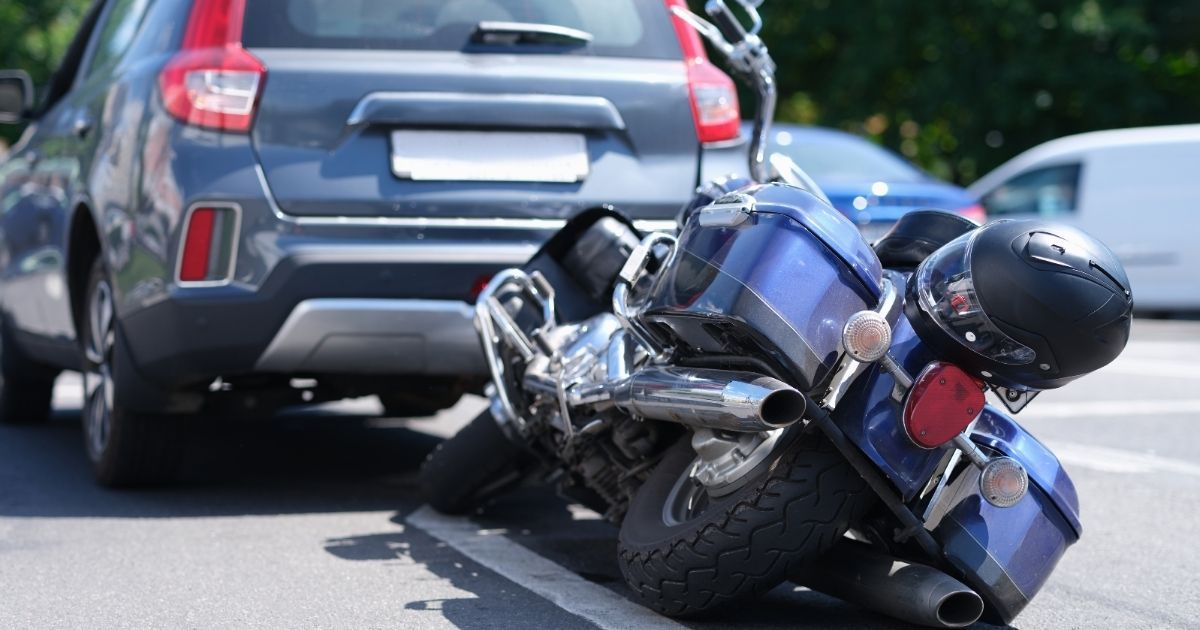A comprehensive guide to underinsured and uninsured Massachusetts motorist coverage
Recent Post
Frequently Asked Questions
What’s the Most Common Cause of Motorcycle Accidents in Massachusetts?
Failure to yield by car drivers, especially during left-hand turns, tops the list, causing nearly 40–50% of multi-vehicle crashes. This aligns with the 1,800–2,000 annual incidents, particularly in busy Norfolk and Bristol counties.
Are Motorcycle Accidents More Deadly in Massachusetts Than Elsewhere?
Yes, somewhat—80% of crashes here result in serious injury or death, higher than the national average (around 60–70%), due to dense traffic and rural road risks. The 450 deaths over 10 years reflect this elevated severity.
How Does Weather Affect Motorcycle Crashes in Massachusetts?
Rain and snow significantly increase crash risk by reducing traction, contributing to the 66% of fatalities on rural roads like those in Plymouth County. Wet weather likely factored into dozens of the 160–180 county deaths since 2015.
Can I Sue If a Pothole Caused My Accident?
Yes, if poor road maintenance caused the crash, you might sue the responsible municipality (e.g., in Plymouth or Bristol counties). You’d need to prove negligence and file within three years, though such cases are tough to win.
Does Not Wearing a Helmet Make Accidents More Common?
No, it doesn’t cause crashes, but Massachusetts’ mandatory helmet law (90% compliance) reduces fatality severity. Non-compliance, rare here, might worsen outcomes, as seen in some of the 24 young rider deaths in 2018.
Why Are Intersections So Dangerous for Motorcyclists?
Intersections combine high traffic, turning vehicles, and visibility issues—41% of serious injuries occur there. In Brockton (Plymouth County) or Quincy (Norfolk County), these factors likely drove many of the decade’s 60–120 fatalities.
Imagine driving home on a quiet Massachusetts night when suddenly a car swerves into your lane, colliding with you and then speeding away. With a smashed fender and a racing heart, you wonder, "What now?"
This scenario depicts the critical need for uninsured and underinsured motorist coverage. Massachusetts roads, like those everywhere, host a silent threat: drivers who either lack insurance or carry insufficient coverage. However, Massachusetts is not just autumn leaves and historic trails; it's a state with stringent insurance requirements designed to protect its drivers.
In this blog, we will review what the Bay State mandates for its motorists, the coverage limits that dictate the extent of protection, and the penalties for those who gamble with the law. By understanding the benefits and limitations of uninsured and underinsured motorist coverage, you can equip yourself with the knowledge to handle unfortunate roadway incidents – from hit-and-runs to filing claims and addressing medical costs.
What is Uninsured Motorist coverage?
Uninsured motorist coverage is a type of insurance protection that offers financial coverage for drivers who are involved in a motor vehicle accident with someone who does not have any liability insurance.
This coverage is crucial for incidents where you or your passengers suffer injuries or property damage caused by an uninsured driver. It serves as a safety net, providing the assurance that you will not be left with the financial burden due to another driver's lack of insurance. In some cases, it can also apply to hit-and-run accidents where the at-fault driver cannot be identified.
Underinsured motorist coverage comes into play when an accident occurs and the at-fault driver's liability limits are too low to cover the medical expenses, lost wages, or other damages suffered by the injured party. It acts as a financial safety net for scenarios where the responsible driver's insurance is insufficient to adequately compensate for the injuries and damages sustained. In a practical sense, underinsured coverage can be viewed as a supplement to the at-fault driver's insurance, stepping in to cover the shortfall and ensure that victims receive fair compensation without having to bear the economic strain themselves.
Difference between uninsured and underinsured motorist coverage
| Uninsured Motorist Coverage | Underinsured Motorist Coverage |
|---|---|
| Activated when the at-fault driver has no liability insurance. | Activated when the at-fault driver's insurance exists but is inadequate to cover the full extent of the damages. |
| Covers bodily injury and, in some cases, property damage. | Typically covers the gap between the at-fault driver's liability limits and the actual damages (up to the policy limits of the underinsured coverage). |
| Can apply to hit-and-run accidents. | Applies only when the at-fault driver’s identity and insurance status are known. |
Understanding the nuances between uninsured and underinsured motorist coverage is crucial for drivers seeking comprehensive protection. The primary difference lies in the status of the at-fault driver’s insurance at the time of the accident:
In simple terms, uninsured motorist coverage kicks in when there is no insurance at all to claim from the at-fault driver, while underinsured coverage comes into effect when the at-fault driver’s insurance is present but insufficient, allowing the victim to claim from their own insurance for the remaining amount necessary for a complete financial recovery from the accident.
Importance of uninsured motorist coverage
Uninsured motorist coverage can be the beacon of hope in the murky aftermath of an accident with an at-fault driver who has no insurance. This form of protection is not just a legal tick-box; it is a fundamental safety net for you and your loved ones. Similarly, underinsured motorist coverage safeguards you from the financial strain when the at-fault party's insurance falls short.
The differences between these two types of coverage are subtle, yet crucial in the event of an accident. The value of uninsured motorist coverage becomes evident when considering the financial implications following an accident where the at-fault driver is uninsured. Without this coverage, victims may have to pay out of pocket for medical treatment, vehicle repairs, and other related expenses, which can quickly add up to substantial amounts.
In states like Massachusetts, where insurance is mandatory, uninsured motorist coverage is especially important as it reflects the state's commitment to responsible driving and financial protection of its motorists. Although neighboring states like Rhode Island may also have their own requirements, the coverage extends protection when driving across state lines, offering peace of mind and consistent coverage within your insurance policy.
Benefits include:
- Protection Against Uninsured Drivers. Should an uninsured driver cause an accident, your UM coverage can compensate you for bodily injury and, depending on your policy, property damage—expenses that otherwise might not be covered.
- Coverage for Hit-and-Run Accidents. If involved in a hit-and-run, you're encumbered with a similar financial burden as if hit by an uninsured driver. UM coverage can significantly ease this burden.
- Coverage in Underinsured Instances. When the at-fault driver's insurance is insufficient to cover your expenses, UIM coverage can provide the additional needed funds up to the policy limits.
- Added Layer of Security. UM and UIM coverages act as a safety net, safeguarding you from potential financial distress due to the fault party's lack of adequate coverage.
- Coverage for All Insured Parties. The coverage extends to you, your family members, and, in most cases, passengers, offering broad protection beyond the policyholder.
- No-Fault Benefits. UM and UIM claims are typically processed without consideration of fault, which can lead to a smoother and faster settlement process.
Massachusetts state insurance requirements
In the Commonwealth of Massachusetts, navigating the realm of auto insurance requirements is a critical step for every motorist. The state mandates specific types of coverages as part of the legal responsibilities associated with car ownership to ensure financial protection in the event of a motor vehicle accident. These requirements are not just suggestions but are enforced by law, embodying a compulsory framework designed to safeguard both drivers and passengers on Massachusetts roads.
Minimum insurance coverage required in Massachusetts
As per Massachusetts law, all drivers must carry a minimum level of auto insurance coverage to legally operate a vehicle. The following is a breakdown of the required coverage, which works together to offer a comprehensive shield against a variety of potential financial risks:
- Bodily Injury Coverage to cover injuries to others, with a minimum limit of $20,000 per person and $40,000 per accident.
- Personal Injury Protection (PIP): to pay for medical expenses, lost wages, and other related costs for you, your passengers, and any pedestrians involved, with a minimum limit of $8,000 per person, per accident.
- Property Damage Coverage to cover damage you may cause to someone else's property, with a minimum limit of $5,000.
- Uninsured Motorist Coverage to protect you in the event you are injured by an uninsured driver or hit-and-run accident, with the same minimums as bodily injury coverage.
These minimum limits are often expressed as 20/40/5 for bodily injury, property damage, and PIP, respectively. Drivers should consult with an insurance agent to discuss coverage options and to ensure they meet the state's legal requirements.
Penalties for driving without insurance in Massachusetts
Driving without the required insurance in Massachusetts can yield dire consequences. If you're caught operating a vehicle without proof of insurance, the penalties can be steep and varied, including:
- Initial fines can range from $500 to $5,000 or more, depending on the circumstances surrounding the lack of insurance.
- Your driver's license can be suspended for up to 60 days for a first offense and longer for subsequent offenses.
- Your vehicle's registration can also be suspended, rendering it illegal to drive the vehicle on public roads.
In addition to these penalties, reinstatement of driving privileges can include fees, and you may be required to file an SR-22 form (a certificate of financial responsibility) with the Registry of Motor Vehicles.
How uninsured and underinsured motorist coverage applies to hit-and-run accidents
In the instance of a hit-and-run, uninsured motorist (UM) and underinsured motorist (UIM) coverage can be a saving grace. Massachusetts law requires all drivers to carry UM coverage, which also applies to hit-and-run situations. Typically, UM coverage can compensate you for bodily injury caused by an unidentified driver, up to the policy limits. Similarly, UIM coverage steps in when an at-fault driver has inadequate insurance to cover the total cost of your injuries or damages.
For property damage caused by a hit-and-run, having uninsured motorist property damage (UMPD) would provide coverage. However, since UMPD is not mandated by Massachusetts law, not all policies may offer it. Thus, in such cases where UMPD is absent, collision coverage could cover the vehicle damage, if you have opted for it.
Medical expenses and Personal Injury Protection (PIP)
Personal Injury Protection (PIP) is a mandatory component of auto insurance in Massachusetts and plays a primary role in covering medical expenses after a motor vehicle accident. It is designed to cover the policyholder, passengers, and pedestrians, regardless of who is at fault for the accident.
| Coverage | Benefits | Limitations |
|---|---|---|
| Personal Injury Protection (PIP) | Medical expenses | Limited to $8,000 worth of benefits |
| Lost wages | May be reduced if health insurance is available | |
| Replacement services (home care, etc.) |
Steps to Follow When Filing an Uninsured or Underinsured Motorist Claim
- Notify Your Insurance Company: As soon as possible after the accident, contact your insurance provider to report the incident. Timeliness is key to avoid any potential delays in coverage.
- Document the Accident: Gather as much information as you can at the scene. This includes photos of the vehicles, a copy of the police report, and any witness statements.
- Record Your Expenses: Keep a detailed record of all medical treatment, repairs, and any other expenses incurred as a result of the accident.
- Review Your Insurance Policy: Look over your policy to understand the coverage limits and any potential exclusions or requirements that could affect your claim.
- Submit a Claim: Fill out the necessary claim forms provided by your insurance company and submit them along with any supporting documentation.
- Cooperate With the Claims Process: Be prepared to provide additional information if your insurance company requests it. Cooperation can expedite the processing of your claim.
- Consult a Professional: Consider speaking with an insurance agent or legal professional if you have questions or need guidance on the claims process.
Common Challenges in Filing an Uninsured or Underinsured Motorist Claim
Filing a claim for an accident involving an uninsured or underinsured motorist can present several challenges:
| Challenge | Description |
|---|---|
| Fault Determination | Difficulty in establishing liability |
| Insufficient Coverage | At-fault party's limits may not be enough |
| Insurer Negotiations | Working towards a fair settlement |
| Legal Barriers | Navigating through potential legal proceedings |
| Time Limits | Adhering to deadlines for claim submission |
| Benefits Coordination | Managing overlap of various insurances |
What to do if you been injured by an uninsured or underinsured motorist
If you've been injured by an uninsured or underinsured motorist in Massachusetts, the path towards compensation may seem daunting. However, a personal injury lawyer can significantly aid in navigating this challenging situation. They'll work to:
- Investigate the Accident and collect evidence to build a strong case against the at-fault driver.
- Provide insurance guidance to help you understand your uninsured and underinsured motorist coverage and assist with filing a claim.
- Negotiate with Insurance Companies to advocate on your behalf for a fair settlement that covers medical expenses, lost wages, and pain and suffering.
- If necessary, represent you in court to fight for your right to adequate compensation though litigation.
- Maximize Compensation to ensure that you receive the maximum benefit available under your insurance policy limits.
In the aftermath of such an incident, it's crucial to report the accident promptly, seek medical treatment, and document all injuries and damages. Act swiftly - Massachusetts law limits the time to take legal action. Consulting with a personal injury lawyer will streamline this process, aiming for a resolution that helps mitigate the financial strain of the accident.
Contact the Law Offices of Jason M. Ranallo
If you want or need legal assistance, our experienced and trusted personal injury lawyers at the Law Offices of Jason M. Ranallo, P.C. have what it takes to fight an insurance company every step of the way. We settle cases through negotiation, mediation, arbitration, and will go to trial if a fair and just settlement cannot be achieved.
Our personal injury attorneys work on a contingency fee basis, which means there is no legal fee unless our attorneys recover financial compensation for your injuries. If you believe you have a personal injury claim from a vehicle accident, contact us today and we will provide a free case evaluation.










